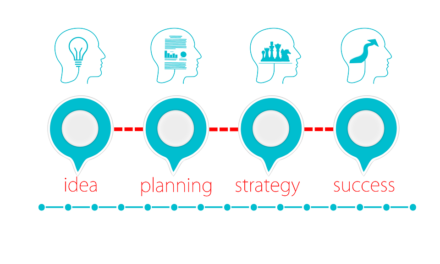Recent improvements in cutting-edge technology have made geotargeting a highly successful way of optimizing your marketing strategies. Although businesses that provide marketing services can assist you in creating campaigns tailored to a particular geographic area, companies specializing in graphic design can also help you create stunning visuals for your promotional efforts.
What is Geotargeting?
Geotargeting, also known as local PPC, involves serving adverts or content based on the geographical area of the intended recipients, be they current or potential consumers.
Advertising goods and services to local individuals is beneficial for businesses.
Geotargeting can be done in multiple ways, from using zip codes with device IDs or IP addresses to employing geo-fencing, GPS technology, and other methods.
The concept of this technology is to comprehend a person’s requirements in the here and now to provide accurate advertising material in the proper location and moment. The conditions favor the customer to go ahead and buy what they want.
Furthermore, delivering tailored advertisements to customers builds a connection between them and the company. In a 2019 survey, it was revealed that three-quarters of people would be more inclined to favor a brand that they sense fully comprehends them. Geotargeting is that bridge to better understanding.
In view of this, let us consider some of the main advantages geotargeting offers businesses.
Top 5 Benefits Geotargeting can Provide Your Business
Incorporating location-specific advertising into your promotional plan has several key advantages. Here are the top five you can expect:
Personalized Content
Geotargeting allows you to craft advertising materials specifically tailored to the audience that will be viewing them. Using tailored ads gives users a superior experience and increases the odds of them completing a transaction.
Once you determine the places your ads will show up, you can promote items, shops, occasions, etc., that are particular to those in that vicinity.
Effective Marketing Budgets
By targeting specific areas where your goods can be bought, are well-received, or are already successful, you can make your promoting efforts more successful and cost-efficient.
Product and Market Development
Geotargeting also helps brands trial new goods or services in a more controlled atmosphere.
Placing ads for new products in a certain spot makes it easier to keep track of the various factors, giving you more precise information. Afterward, you can assess the outcomes and adjust your offer to a wider range of people.
Build Authority
If you desire to be acknowledged as the top provider of a commodity or service in your area, utilizing geotargeting may aid you in achieving that reputation.
By displaying advertisements that include pertinent local happenings, answering queries posed by your patrons, and more, you can establish a tie to your nearby populace and bring in more clients and aid lead creation.
Hide Ads from Competitors
In conclusion, geotargeting can give you a leg up on the other players. How? When running your ad campaigns, stay away from regions where your main competitors are advertising. This enables your advertisements to jump-start over other companies that have not yet seen them.

FREE BOOK
Discover the 5 Compelling Book Titles Types that create an ‘I Want That…’ response.
5 Geo-Targeting Tests to Drive Conversions
Below are five geo-targeting trials you can execute to identify if they increase your outcomes.
1. Experiment With Languages
Map the page’s language to the visitor’s nation of origin. I would recommend changing the language if it is necessary. Evaluate which one produces better results.
You can try out the entire process in various languages or measure how well a particular indication (for instance, a call to action click, the amount of time spent on the site, etc.) performs.
When one visits Samsung.com from Hong Kong, the direction will take them to the Samsung.com/hk area, and the language is as anticipated. The main menu has an icon at the bottom left to locate a change and a language shift at the top right corner. It’s quite simple to find them.
If you go to the Coca-Cola website in Germany, it will be in English. Germany is the main focus, making it convenient for the individual to switch. Splash screens are often used in international websites, but you have to experiment to determine if they increase sales conversion rates.
2. Match Local Currency
Try using a different currency that originates from a specific region or country. You may wish to opt for something easy and test it on just one well-known item or webpage. Do sales differ depending on the location when considering the currency of the customer’s nation?
Etsy.com does a great job of offering an extensive array of different currencies for the items up for sale.
3. Evaluate Serving Local, Relevant Offers
You can also verify if the offer on your pages (such as product, service, message, etc.) is compatible with the visitor’s exact region. This sounds simple but requires careful thought and planning.
Analyze the efficacy of the funnel for people who have been geo-targeted compared to those who are not geo-targeted – are they finding the horn advantageous or restrictive? Do visitors who are provided with local offers behave differently than those who choose their location based on statistical data? Test it!
A frequent problem is the accessibility of a specific product or service in some countries. At times, selling may be limited to one nation, and it is considered wise to inform foreign buyers of such a situation.
What is the point of giving customers an unpleasant experience by exhibiting products they cannot purchase?
4. Match Paid Marketing Campaigns
Geo-targeting enables you to have different strategies applied in various locations. Your advertisements could end up being seen by people around the globe, so it is advisable to tailor your marketing material accordingly, depending on the particular group and region they are targeting.
Does the marketing language on your website match the content of the geo-specific advertisement? Try testing directing visitors who are in a specific geographical location with ads tailored to them (based on language, currency, offering, etc.) to a page specifically designed for that location and a page not specifically tailored to that geography. Which of these pages ends up being more successful in terms of conversions?
5. Evaluate Visual Elements
When it comes to Split or Multivariate testing, changing the appearance of visuals can significantly impact. Testing design features based on the visitor’s place of residence could result in higher or lower conversion rates.
How vibrant hues are interpreted by one society in one part of the world may be hugely dissimilar from the way they are perceived in another. Think of holiday themes or national flags.
There is a major distinction, even without comprehending the material. Be aware that the initial version of the page for the Japanese website is distinct.
How to Geo-Target Your Pages for Testing?
Ok, so how do you test location-based assumptions? There are a few ways. Some require a lot of coding, while others are simpler. The platform can impact how you test as well. Google Ads enables you to design several adverts directly on their platform.
1. IP Redirect
You may attempt to use IP-based redirects on your server to maintain simplicity. You can use either .htaccess or httpd. conf on your Apache server (mod_geoip) to establish basic redirection based on geographic location.
MaxMind’s GeoIP API will facilitate quickly setting up your server to route traffic based on individual IP addresses. Your web analytics and optimization should do the rest. Ensure you have at least two landing pages to experiment with your ideas.
2. Pay-Per-Click Advertising (PPC)
You can also check the geographical location of an area with a PPC system like Google Ads or Facebook Ads. You can tailor your campaign to be directed towards particular regions and dialects and also be able to customize where the ads will send visitors.
Remember that you must create a separate page for each campaign, but the outcomes will be seen very quickly. You can conduct a rapid, information-packed, geographically-based conversion evaluation with only a bit more.
3. Geo-Target Domains / Subfolders
An alternate strategy is to abide by Google’s guidance for dividing countries and using subdomains or subdirectories for particular nations and languages. This supposes that you have a commonly used domain name extension such as .com, .org, etc.
For example, es.example.com or www.example.com/es/ for Spain/Spanish. It could be the ideal local search engine optimization (SEO) solution since it also means the subdomains and subfolders located in the top-level domain (TLD) will be visible in local Google searches.
Setting up this process might involve considerable effort, which could inhibit your efforts to create a unified image for your company worldwide. It is essential to bear in mind that this approach does not address the language issue; it only specifies the nation’s location. If you offer goods or services worldwide, you should not restrict where Google displays results related to your business.
Despite this, this method can be used as a solid starting point to improve the conversion rate of those separated web pages or websites.
4. Geo-Target Content
For tailored topics and detailed experimental testing, location-based placements and components will depend on your current traffic numbers and let you carry out these experiments without any cost from PPC and an international SEO approach.
There are several options:
Coding. Employ PHP, JavaScript (and any further technologies) to interrogate a geolocation database and subsequently carry out the needed display logic. There are plenty of examples available online to complete this task. It is easy if you feel okay about poking around behind the scenes.
Web Services and Tools. Google’s Optimize enables basic regional targeting of website components, thus making it a user-friendly method to get going. You can evaluate by location, area, metropolis, or nation. (But not language.)
Successful Real-World Marketing Campaigns Aided by geotargeting.
Many well-known companies have had favorable outcomes by employing geotargeting in their marketing efforts. Here are 2 notable examples.
UNIQLO
UNIQLO provides casual clothing for everybody, including guys, gals, children, and infants. There are more than 1000 shops located all around the globe.
The marketing campaign challenge
In 2012, UNIQLO was setting out to start its annual sales promotion, but they were hoping to achieve even greater success. They chose to spread the word through Facebook, the foremost social networking platform used by their target demographic comprising young people then.
The brand launched a ‘UNIQLO Check-in Chance’ activity to boost its sales. Each individual who checked in at one of their stores through Facebook had a shot at winning 100 yen. Once they had registered, their information would be entered into a lottery with a hundred yen as the award. The 100 yen could only be used as payment in a UNIQLO store as long as the sale was still running.
UNIQLO turned the check-ins at their stores into entertainment available to everyone instead of keeping the check-ins on Facebook limited to friends only.
Results
The buzz that the Facebook check-ins engendered at each shop soon became a worldwide phenomenon. The chance to enter a raffle and win a monetary voucher motivated people to join the check-in process, thereby creating more store traffic.
This means that Facebook check-ins provide tailored advertisements to people in a specific location.
The UNIQLO yearly sales achieved a record-breaking 202,479 check-ins over the course of three days. The Facebook page associated with the brand gained more than 10,000 likes due to the campaign. Foot traffic to their stores also reached new highs. UNIQLO moved merchandise worth more than 10 billion Japanese yen (almost $93,000) throughout the three-day period of the sale.
Takeaway
The most notable aspect of this campaign was its simplicity. A guideline that many people find useful is to make the marketing tactics used as straightforward as feasible so that there isn’t a difficult process for customers (or people in the target audience) to follow. Putting in some incentives (for instance, the prize raffle here) is a great way to make likely clients take action.
Coca-cola
Coca-cola is the number one drinks bottling business on the planet, with their beverages found in over two hundred countries.
The marketing campaign challenge
In order to boost its sales, Coca-Cola searched for approaches to streamline and optimize its supply procedures and chose to utilize location-based data (geotargeting).
The corporation tapped into the information collected from their vending machines, a hefty portion of which had internet access, to better meet the needs of their customers. The machines employ facial recognition technology combined with an analysis of payments to acquire data about which beverages are the most popular. Coca-cola was able to determine which vending machines attracted the most patrons by examining the information their devices produced.
Results
Coca-cola examined the information they had obtained to pinpoint the vending machines that sold well and those that did not perform as well. They started over and rearranged their supply resources. By enhancing their supply chain, they could bolster their profits and reduce expenses.
Takeaway
This text shows how analyzing sales based on location and then employing geotargeting can advance and increase sales in areas with the biggest potential.
Conclusion to Increasing Conversions with Geo-Targeting
Testing the geographic targeting of something is easy and advantageous for most websites, advertisers, and publishers, as well as people who are utilizing PPC (pay-per-click) campaigns or SEO (search engine optimization). Geo-targeting not only facilitates finding the most pertinent material to display to your users but also offers a fantastic opportunity to look into altering conversion rates.
Guest Post Disclaimer
The views expressed in this post do not represent the views of 90-Minute Books. The information has not been verified and should be considered an opinion. You are always advised to do independent research.











